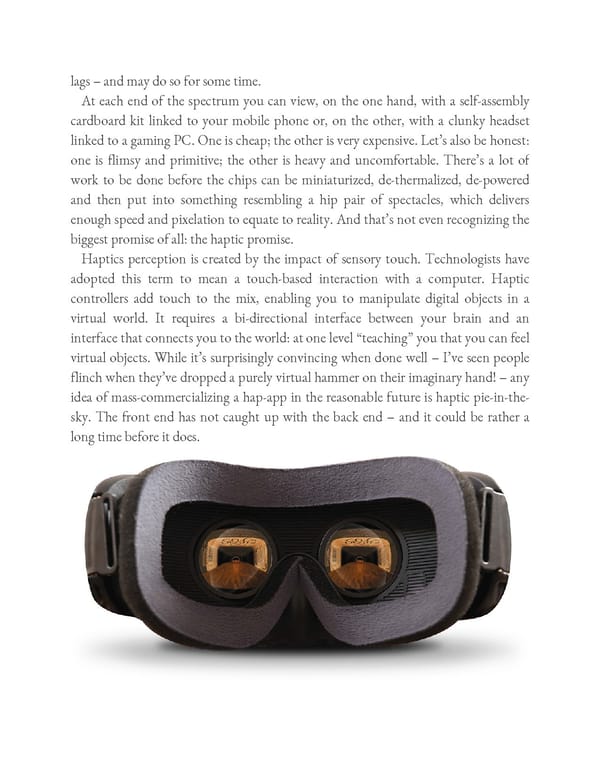lags – and may do so for some time. At each end of the spectrum you can view, on the one hand, with a self-assembly cardboard kit linked to your mobile phone or, on the other, with a clunky headset linked to a gaming PC. One is cheap; the other is very expensive. Let’s also be honest: one is flimsy and primitive; the other is heavy and uncomfortable. There’s a lot of work to be done before the chips can be miniaturized, de-thermalized, de-powered and then put into something resembling a hip pair of spectacles, which delivers enough speed and pixelation to equate to reality. And that’s not even recognizing the biggest promise of all: the haptic promise. Haptics perception is created by the impact of sensory touch. Technologists have adopted this term to mean a touch-based interaction with a computer. Haptic controllers add touch to the mix, enabling you to manipulate digital objects in a virtual world. It requires a bi-directional interface between your brain and an interface that connects you to the world: at one level “teaching” you that you can feel virtual objects. While it’s surprisingly convincing when done well – I’ve seen people flinch when they’ve dropped a purely virtual hammer on their imaginary hand! – any idea of mass-commercializing a hap-app in the reasonable future is haptic pie-in-the- sky. The front end has not caught up with the back end – and it could be rather a long time before it does.
 Ogilvy on Advertising in the Digital Age Page 270 Page 272
Ogilvy on Advertising in the Digital Age Page 270 Page 272